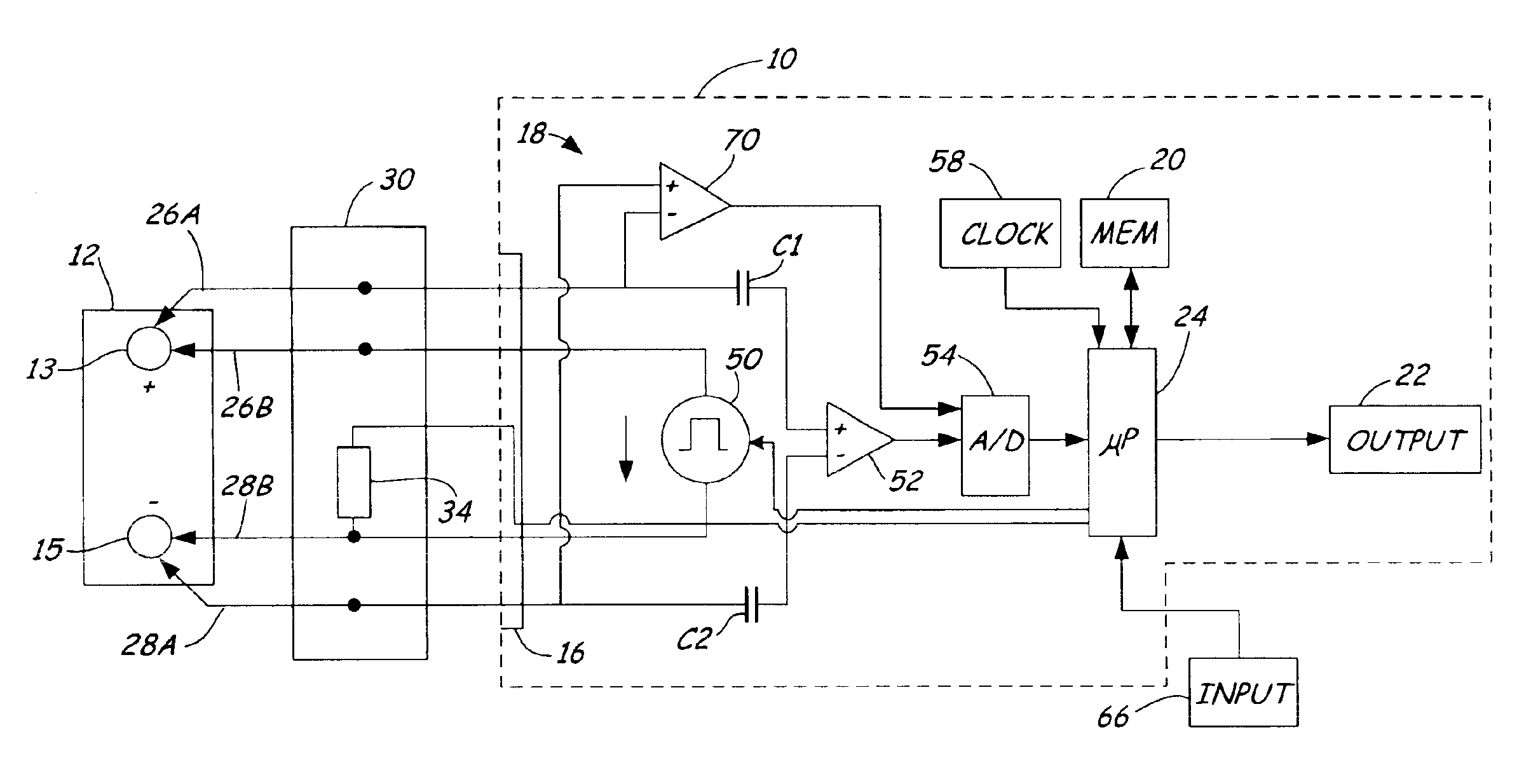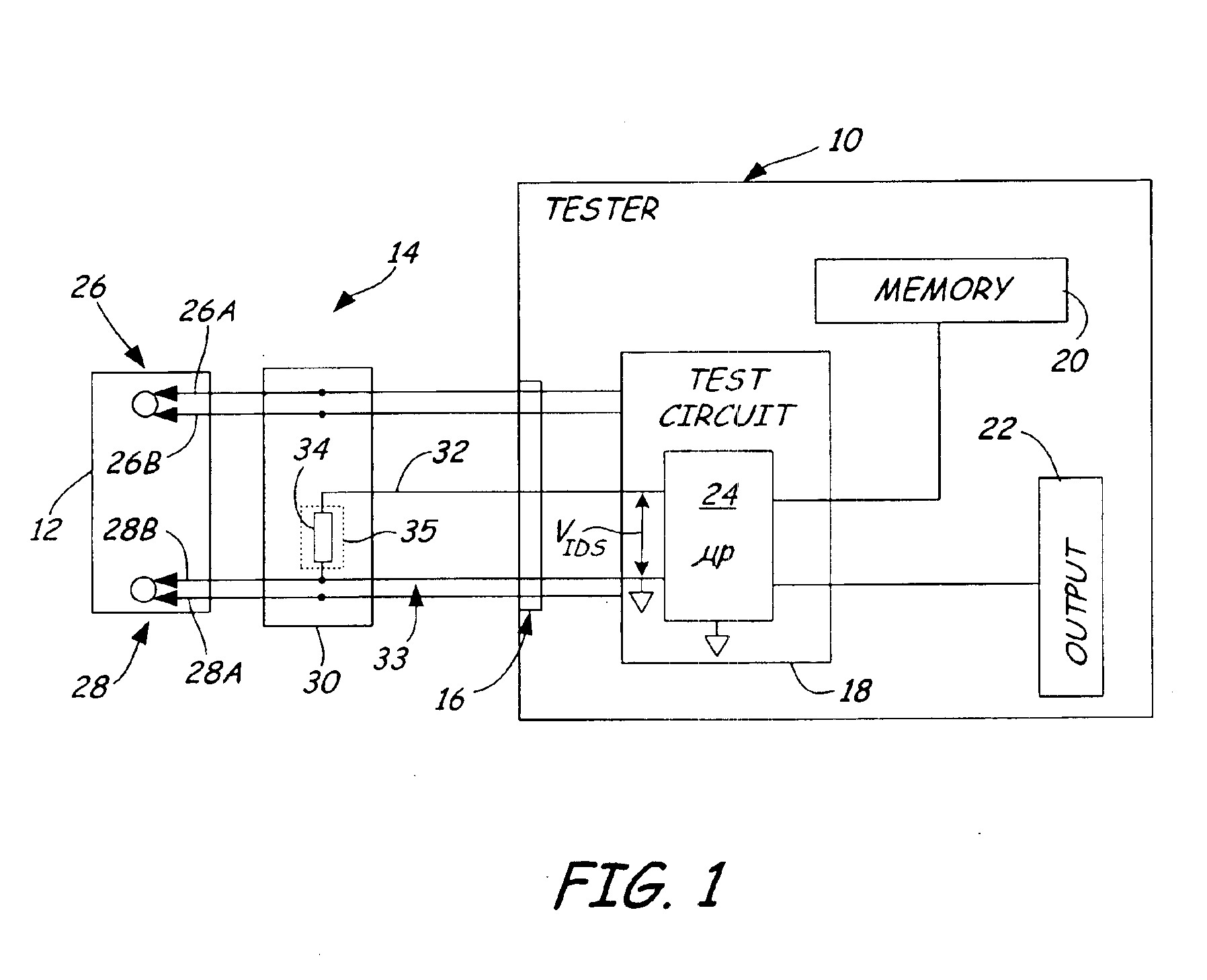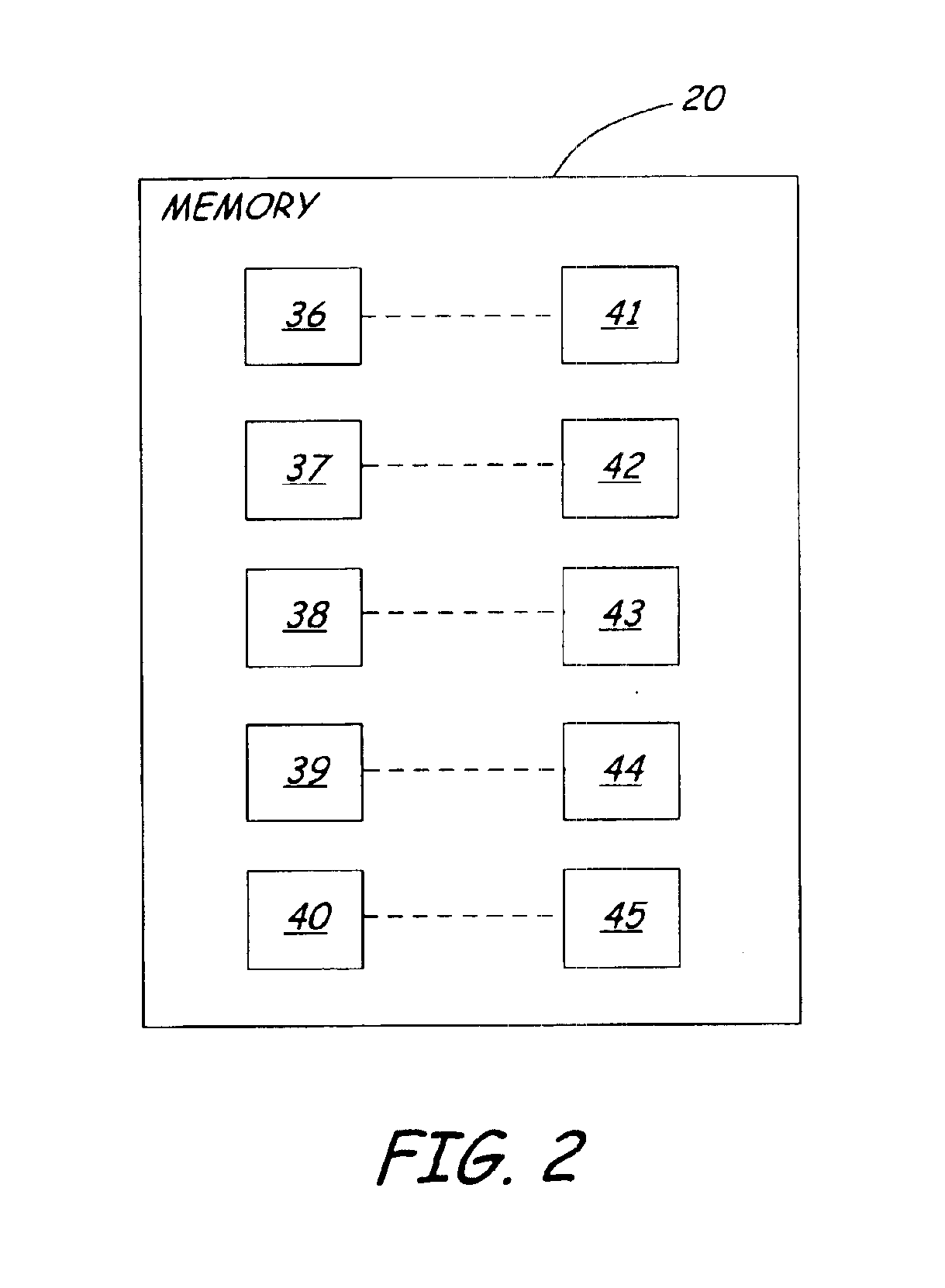Electronic battery tester
- Summary
- Abstract
- Description
- Claims
- Application Information
AI Technical Summary
Problems solved by technology
Method used
Image
Examples
Embodiment Construction
[0013]The present invention includes a system implemented in an electronic battery tester, by which the tester detects a type of cable through which it is coupled to a battery. The tester then selects a calibration value, suitable for the detected cable, from a plurality of calibration values and tests the battery through the cable as a function of the selected calibration value. The present invention also includes a cable for coupling a battery to a battery tester, wherein the cable includes a characteristic that is detectable by the tester.
[0014]FIG. 1 is a very simplified block diagram of a battery tester 10 coupled to a battery 12 via a cable 14 in accordance with an illustrative embodiment of the present invention. The same reference numerals are used in the various figures to represent the same or similar elements. Note that FIG. 1 is a simplified block diagram of a specific type of battery tester. However, the present invention is applicable to any type of battery tester incl...
PUM
 Login to View More
Login to View More Abstract
Description
Claims
Application Information
 Login to View More
Login to View More - R&D
- Intellectual Property
- Life Sciences
- Materials
- Tech Scout
- Unparalleled Data Quality
- Higher Quality Content
- 60% Fewer Hallucinations
Browse by: Latest US Patents, China's latest patents, Technical Efficacy Thesaurus, Application Domain, Technology Topic, Popular Technical Reports.
© 2025 PatSnap. All rights reserved.Legal|Privacy policy|Modern Slavery Act Transparency Statement|Sitemap|About US| Contact US: help@patsnap.com



